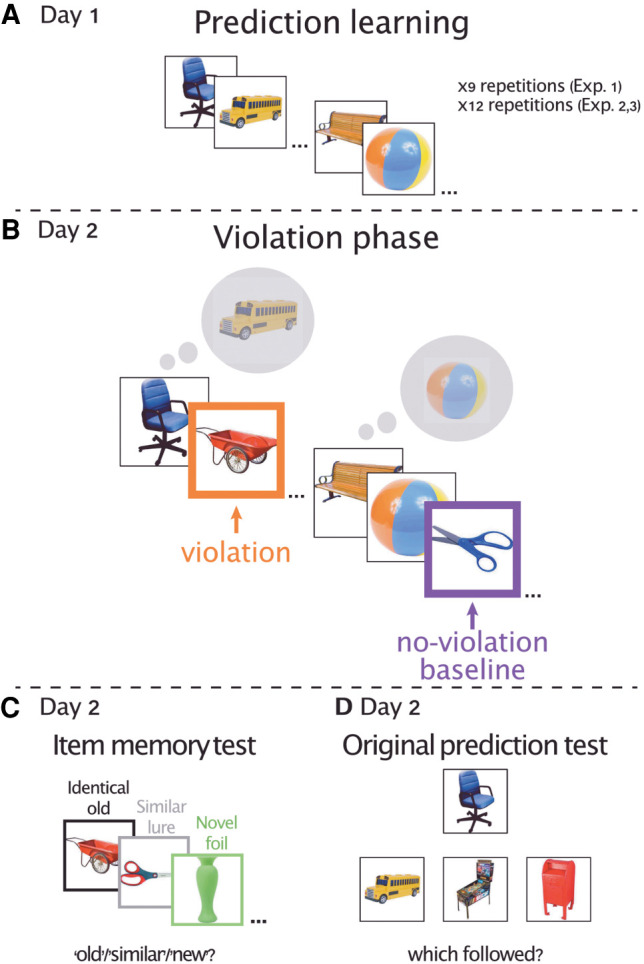Figure 1.

Experimental design, all experiments. (A) During prediction learning (day 1), participants repeatedly viewed pairs of sequentially presented objects embedded within a stream of objects. Participants indicated whether each object was bigger or smaller than the previous object (experiments 1 and 2) or than a shoe box (experiment 3). (B) In the violation phase (day 2, preceded by a reminder of the predictions, not shown) (see the text for details), novel items were inserted to the sequence of objects, either instead of the second object in the pair, thus violating learned predictions (violation, in orange), or after the second object in a pair (no-violation, purple). The colors appear here for illustration; no color frames appeared on the screen. The task was identical to the prediction learning phase. (C) During the item memory test (day 2, immediately following the violation phase), the participants were presented with either identical copies of the violation and no violation items presented during the violation phase (identical old), or with another exemplar of the same item (similar lure) or novel items that did not appear in the experiment before (novel foil). Participants indicated whether an item was “old,” “similar,” or “new.” (D) We tested memory for the original predictive pair (day 2), by presenting participants with the first object in a pair and asking which of three bottom objects followed the top object during the study. Distractors were intralist within condition.
